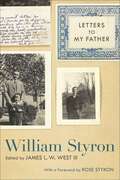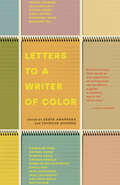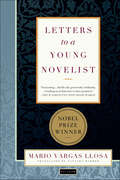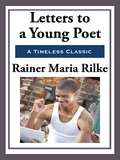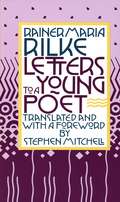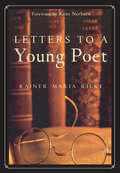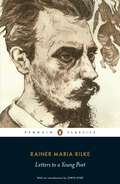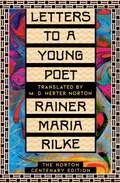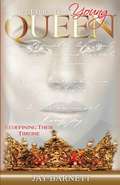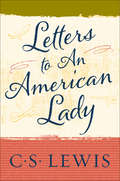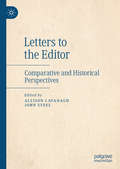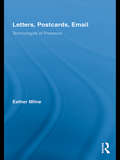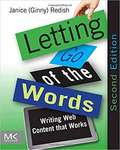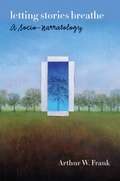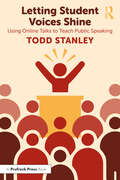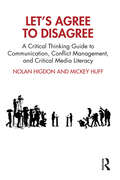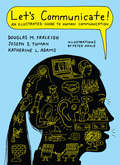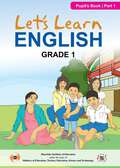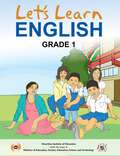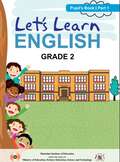- Table View
- List View
Letters to My Father (Southern Literary Studies)
by William Styron“I’ve finally pretty much decided what to write next—a novel based on Nat Turner’s rebellion,” twenty-six-year-old William Styron confided to his father in a letter he wrote on May 1, 1952. Styron would not publish his Pulitzer Prize–winning The Confessions of Nat Turner until 1967, but this letter undercuts those critics who later attacked the writer as an opportunist capitalizing on the heated racial climate of the late 1960s. From 1943 to 1953, Styron wrote over one hundred letters to William C. Styron, Sr., detailing his adventures, his works in progress, and his ruminations on the craft of writing. In Letters to My Father, Styron biographer James L. W. West III collects this correspondence for the first time, revealing the early, intimate thoughts of a young man who was to become a literary icon. Styron wrote his earliest letters from Davidson College, where he was very much unsure of himself and of his prospects in life. By the last few letters, however, he had achieved a great deal: he had earned a commission in the Marine Corps, survived World War II, published the novel Lie Down in Darkness (1951) and the novella The Long March (1953), and won the Prix de Rome. He had also recently married and was about to return to the United States from an expatriate period in Paris and Rome. The letters constitute a portrait of the artist as a young man. They read like an epistolary novel, with movement from location to location and changes in voice and language. Styron was extremely close to his father and quite open with him. His story is a classic one, from youthful insecurity to artistic self-discovery, capped by recognition and success. There are challenges along the way for the hero—poor academic performance, a syphilis scare, writer’s block, temporary frustration in romance. But Styron overcomes these difficulties and emerges as a confident young writer, ready to tackle his next project, the novel Set This House on Fire (1960). Rose Styron, the author’s widow, contributes a prefatory memoir of the senior Styron. West has provided comprehensive annotations to the correspondence, and the volume also has several illustrations, including facsimiles of some of the letters, which survive among Styron’s papers at Duke University. Finally, there is a selection of Styron’s apprentice fiction from the late 1940s and early 1950s. In all of American literature, no other extended series of such letters—son to father—exists. Letters to My Father offers a unique glimpse into the formative years of one of the most admired and controversial writers of his time.
Letters to Power: Public Advocacy Without Public Intellectuals (Rhetoric and Democratic Deliberation #2)
by Samuel McCormickAlthough the scarcity of public intellectuals among today’s academic professionals is certainly a cause for concern, it also serves as a challenge to explore alternative, more subtle forms of political intelligence. Letters to Power accepts this challenge, guiding readers through ancient, medieval, and modern traditions of learned advocacy in search of persuasive techniques, resistant practices, and ethical sensibilities for use in contemporary democratic public culture. At the center of this book are the political epistles of four renowned scholars: the Roman Stoic Seneca the Younger, the late-medieval feminist Christine de Pizan, the key Enlightenment thinker Immanuel Kant, and the Christian anti-philosopher Søren Kierkegaard. Anticipating much of today’s online advocacy, their letter-writing helps would-be intellectuals understand the economy of personal and public address at work in contemporary relations of power, suggesting that the art of lettered protest, like letter-writing itself, involves appealing to diverse, and often strictly virtual, audiences. In this sense, Letters to Power is not only a nuanced historical study but also a book in search of a usable past.
Letters to Sartre
by Simone De Beauvoir Quintin HoareLetters written by Simone de Beauvoir to one of the world's most acclaimed philosophers shed light on their relationship and her obsessive need to communicate with him.
Letters to a Writer of Color
by Madeleine Thien Xiaolu Guo Tiphanie YaniqueA vital collection of essays on the power of literature and the craft of writing from an international array of writers of color, sharing the experiences, cultural traditions, and convictions that have shaped them and their work&“Electric essays that speak to the experience of writing from the periphery . . . a guide, a comfort, and a call all at once.&”—Laila Lalami, author of Conditional Citizens Filled with empathy and wisdom, instruction and inspiration, this book encourages us to reevaluate the codes and conventions that have shaped our assumptions about how fiction should be written, and also challenges us to apply its lessons to both what we read and how we read. Featuring: • Taymour Soomro on resisting rigid stories about who you are• Madeleine Thien on how writing builds the room in which it can exist• Amitava Kumar on why authenticity isn&’t a license we carry in our wallets• Tahmima Anam on giving herself permission to be funny• Ingrid Rojas Contreras on the bodily challenge of writing about trauma• Zeyn Joukhadar on queering English and the power of refusing to translate ourselves• Myriam Gurba on the empowering circle of Latina writers she works within• Kiese Laymon on hearing that no one wants to read the story that you want to write• Mohammed Hanif on the censorship he experienced at the hands of political authorities• Deepa Anappara on writing even through conditions that impede the creation of art• Plus essays from Tiphanie Yanique, Xiaolu Guo, Jamil Jan Kochai, Vida Cruz-Borja, Femi Kayode, Nadifa Mohamed in conversation with Leila Aboulela, and Sharlene Teo The start of a more inclusive conversation about storytelling, Letters to a Writer of Color will be a touchstone for aspiring and working writers and for curious readers everywhere.
Letters to a Young Novelist
by Mario Vargas LlosaThe Nobel Prize–winning author&’s classic on the craft of novel writing &“distills [the great works] brilliantly, revealing an architecture to their greatness&” (The Washington Post Book World). In Letters to a Young Novelist, Mario Vargas Llosa condenses a lifetime of writing, reading, and thought into an essential manual for aspiring writers. Drawing on the stories and novels of writers from around the globe—including Borges, Bierce, Céline, Cortázar, Faulkner, Kafka, Robbe-Grillet and others—he lays bare the inner workings of fiction, all the while urging young novelists not to lose touch with the elemental urge to create. Conversational, eloquent, and effortlessly erudite, this little book is destined to be read and re-read by young writers, old writers, would-be writers, and all those with a stake in the world of letters.
Letters to a Young Poet
by Rainer Maria RilkeThese ten letters, written by one of the greatest poets of the twentieth century, offer deep and sincere advice to the young poet. They touch on all aspects of life and are valuable to anyone wishing to be a poet and to those who are not. Written with power, style, and conviction these letters will guide and inspire anyone who reads them. Wilder Publications is a green publisher. All of our books are printed to order. This reduces waste and helps us keep prices low while greatly reducing our impact on the environment.
Letters to a Young Poet
by Rainer Maria Rilke Stephen MitchellLetters written over a period of several years on the vocation of writing by a poet whose greatest work was still to come.From the Paperback edition.
Letters to a Young Poet
by Rainer Maria RilkeThese have been called the most famous and beloved letters of the past century. Rainer Maria Rilke himself said that much of his creative expression went into his correspondence, and here he touches upon a wide range of subjects that will interest writers, artists,and thinkers. This luminous translation of Rainer Maria Rilke's classic offers brilliant inspiration to all people who seek to know and express their inner truth. Letters to a Young Poet is a classic that should be required reading for anyone who dreams of expressing themselves creatively.
Letters to a Young Poet (Thrift Editions Ser.)
by Rainer Maria RilkeAt the start of the twentieth century, Rainer Maria Rilke wrote a series of letters to a young officer cadet, advising him on writing, love, sex, suffering and the nature of advice itself; these profound and lyrical letters have since become hugely influential for writers and artists of all kinds. This book also contains the 'Letter from a Young Worker', a striking polemic against Christianity written in letter-form, near the end of Rilke's life. In Lewis Hyde's introduction, he explores the context in which these letters were written and how the author embraced his isolation as a creative force. Charlie Louth's afterword discusses the similarities and contrasts of the two works, and Rilke's religious and sexual wordplay. This edition also contains a chronology, notes, and suggested further reading.
Letters to a Young Poet: The Norton Centenary Edition
by Rainer Maria RilkeA gorgeous edition of one of the most beloved classics of the twentieth century, published in celebration of W. W. Norton’s 100th anniversary. This slim volume of letters from the poet and mystic, Rainer Maria Rilke, to a nineteen-year-old cadet and aspiring poet named Franz Xaver Kappus, has touched millions of readers since it was first published in English in 1934. The translator, Mary Dows Herter Norton—a polymath extraordinaire with expertise in music, literature, and science, and who, along with her husband, William Warder Norton, founded the company that bears his name—played a crucial role in elevating Rilke’s reputation in the English-speaking world. This Norton Centenary Edition commemorates Norton, known as “Polly” to friends and colleagues, and the 100th anniversary of the publishing company she co-founded. An admiring foreword by Damion Searls—himself a recent translator of Rilke’s Letters—celebrates Polly’s stylistic achievement, and an afterword by Norton’s President, Julia A. Reidhead, honors her commitment to maintaining W. W. Norton & Company’s independence. This handsome new edition of a beloved classic brings Rilke’s enduring wisdom about life, love, and art to a new generation, in the translation that first introduced him to the English-speaking world.
Letters to a Young Poet: With The Letters From The Young Poet
by Rainer Maria Rilke Damion Searls Franz Xaver Kappus“The ultimate expression of intergenerational literary wisdom.” —Andrew Solomon, The New Yorker A work that has inspired generations, this new edition of Letters to a Young Poet features a fresh translation of Rilke’s ten classic letters, along with the missing letters from the young poet himself.For nearly a century, eager writers and young poets, as well as those simply looking for a purpose in life, have embraced the wisdom of Rainer Maria Rilke’s Letters to a Young Poet, first published in 1929. Most readers and scholars have long assumed that the letters from the young poet were forever lost to posterity. Yet, shockingly, these letters were recently uncovered in Germany, and now the acclaimed translator Damion Searls has not only cast a fresh eye on Rilke’s original letters but also those of the “young poet,” Franz Xaver Kappus, an Austrian military cadet and an aspiring poet. This timeless edition, in addition to presenting their dialogue together for the first time in English, provides a new window into the workings of Rilke’s visionary poetic and philosophical mind, allowing us to reexperience the literary genius of one of the most inspiring works of twentieth-century literature.
Letters to a Young Queen: Redefining Their Throne
by Jay BarnettThis book is a collection of letters and poems for young girls. Author Jay Barnett highlights the struggles and triumphs of the young women he has encountered through the Women of Excellence Project. This book is for the fatherless little girl who is desperately seeking male attention and craves the encouragement, discipline, and authority that only a father figure can give. These letters will inspire and empower young girls from all backgrounds to grow into the queens they were destined to be. Women of the 1900’s had many fearless leaders and trailblazers to admire and respect-Amelia Earhart, Helen Keller, Rosa Parks and Eleanor Roosevelt, to name a few. Since then, women have shattered the glass ceiling-landing positions in traditionally male-dominated industries, such as politics, banking and science. Despite this progression, several prominent women in our current culture detract from the progress made thus far. The days of positive female role models are slowly disappearing, as reality stars and entertainers have captured the attention of our young girls. Young women of this generation have lost sight of the numerous sacrifices made to ensure and protect their freedoms and rights. How do we stop the perpetual cycle of uneducated and foolish behaviors of our young women before it’s too late? The Women of Excellence Project is a program dedicated to the mentoring and mental development of young women. Through this work, author Jay Barnett began to see recurring behavior patterns among the young women highlighting their need for acceptance and validation. Even at an early age, young girls want to pursue what is socially accepted. In the absence of positive role models in today’s society, girls imitate reality TV stars and their friends’ behavior on social media. Now is the time to restore young women to their rightful place in society and to build them up into the queens that they truly are.
Letters to a Young Writer: Some Practical and Philosophical Advice
by Colum MccannFrom the bestselling author of the National Book Award winner Let the Great World Spin comes a lesson in how to be a writer—and so much more than that. Intriguing and inspirational, this book is a call to look outward rather than inward. McCann asks his readers to constantly push the boundaries of experience, to see empathy and wonder in the stories we craft and hear. A paean to the power of language, both by argument and by example, Letters to a Young Writer is fierce and honest in its testament to the bruises delivered by writing as both a profession and a calling. It charges aspiring writers to learn the rules and even break them. These fifty-two essays are ultimately a profound challenge to a new generation to bring truth and light to a dark world through their art. Praise for the fiction of Colum McCann Let the Great World Spin Winner of the National Book Award “One of the most electric, profound novels I have read in years.”—Jonathan Mahler, The New York Times Book Review “There’s so much passion and humor and pure life force on every page that you’ll find yourself giddy, dizzy, overwhelmed.”—Dave Eggers TransAtlantic Longlisted for the Man Booker Prize and shortlisted for the International IMPAC Dublin Literary Award “Reminiscent of the finest work of Michael Ondaatje and Michael Cunningham.”—O: The Oprah Magazine “Another sweeping, beautifully constructed tapestry of life . . . Reading McCann is a rare joy.”—The Seattle Times Thirteen Ways of Looking A New York Times Notable Book of the Year “The irreducible mystery of human experience ties this small collection together, and in each of these stories McCann explores that theme in strikingly effective ways.”—The Washington Post “Extraordinary . . . incandescent.”—Chicago Tribune
Letters to an American Lady
by C. S. LewisOn October 26, 1950, C. S. Lewis wrote the first of more than a hundred letters he would send to a woman he had never met, but with whom he was to maintain a correspondence for the rest of his life.Ranging broadly in subject matter, the letters discuss topics as profound as the love of God and as frivolous as preferences in cats. Lewis himself clearly had no idea that these letters would ever see publication, but they reveal facets of his character little known even to devoted readers of his fantasy and scholarly writings—a man patiently offering encouragement and guidance to another Christian through the day-to-day joys and sorrows of ordinary life.Letters to an American Lady stands as a fascinating and moving testimony to the remarkable humanity and even more remarkable Christianity of C. S. Lewis, and is richly deserving of the position it now takes among the balance of his Christian writings.
Letters to the Editor: Comparative and Historical Perspectives
by John Steel Allison CavanaghThis book provides an account of current work on letters to the editor from a range of different national, cultural, conceptual and methodological perspectives. Letters to the editor provide a window on the reflexive relationship between editorial and readership identities in historical and international contexts. They are a forum through which the personal and the political intersect, a space wherein the implications of contemporaneous events are worked out by citizens and public figures alike, and in which the meaning and significance of unfolding media narratives and events are interpreted and contested. They can also be used to understand the multiple and overlapping ways that particular issues recur over sometimes widely distinct periods. This collection brings together scholars who have helped open up letters to the editor as a resource for scholarship and whose work in this book continues to provide new insights into the relationship between journalism and its publics.
Letters, Postcards, Email: Technologies of Presence (Routledge Research in Cultural and Media Studies)
by Esther MilneIn this original study, Milne moves between close readings of letters, postcards and emails, and investigations of the material, technological infrastructures of these forms, to answer the question: How does presence function as an aesthetic and rhetorical strategy within networked communication practices? As her work reveals, the relation between old and new communication systems is more complex than allowed in much contemporary media theory. Although the correspondents of letters, postcards and emails are not, usually, present to one another as they write and read their exchanges, this does not necessarily inhibit affective communication. Indeed, this study demonstrates how physical absence may, in some instances, provide correspondents with intense intimacy and a spiritual, almost telepathic, sense of the other’s presence. While corresponding by letter, postcard or email, readers construe an imaginary, incorporeal body for their correspondents that, in turn, reworks their interlocutor’s self-presentation. In this regard the fantasy of presence reveals a key paradox of cultural communication, namely that material signifiers can be used to produce the experience of incorporeal presence.
Letting Go of the Words: Writing Web Content that Works (Interactive Technologies)
by Janice Ginny RedishWeb site design and development continues to become more sophisticated. An important part of this maturity originates with well laid out and well written content. Ginny Redish is a world renowned expert on information design and how to produce clear writing in plain language for the web. All of the invaluable information that she shared in the first edition is included with numerous new examples. New information on content strategy for web sites, search engine optimization (SEO), and social media make this once again the only book you need to own to optimize your writing for the web. <p><p> New material on content strategy, search engine optimization, and social media Lots of new and updated examples More emphasis on new hardware like tablets, iPads, and iPhones
Letting Stories Breathe: A Socio-Narratology
by Arthur W. FrankStories accompany us through life from birth to death. But they do not merely entertain, inform, or distress us—they show us what counts as right or wrong and teach us who we are and who we can imagine being. Stories connect people, but they can also disconnect, creating boundaries between people and justifying violence. In Letting Stories Breathe, Arthur W. Frank grapples with this fundamental aspect of our lives, offering both a theory of how stories shape us and a useful method for analyzing them. Along the way he also tells stories: from folktales to research interviews to remembrances. Frank’s unique approach uses literary concepts to ask social scientific questions: how do stories make life good and when do they endanger it? Going beyond theory, he presents a thorough introduction to dialogical narrative analysis, analyzing modes of interpretation, providing specific questions to start analysis, and describing different forms analysis can take. Building on his renowned work exploring the relationship between narrative and illness, Letting Stories Breathe expands Frank’s horizons further, offering a compelling perspective on how stories affect human lives.
Letting Student Voices Shine: Using Online Talks to Teach Public Speaking
by Todd StanleyThis book provides clear, accessible strategies for developing your students public speaking abilities – a valuable skill to help your students shine.Letting Student Voices Shine provides a clear curriculum for improving public speaking competencies, including a progression of mastery, implementable classroom activities, video demonstrations, and rubrics for helping teachers to evaluate and students to improve. In addition to instructional and example videos created specifically for this book, chapters also feature TED Talk examples – the gold standard for effectively conveying accurate, easy-to-understand information to a target audience – to illustrate key points on what does or doesn’t work, and why.Whether used as is, or broken up to focus on specific public speaking skills, teachers in any subject area will find this book an invaluable tool to ease students into public speaking until they are expert orators.
Let’s Agree to Disagree: A Critical Thinking Guide to Communication, Conflict Management, and Critical Media Literacy
by Mickey Huff Nolan HigdonIn an age defined by divisive discourse and disinformation, democracy hangs in the balance. Let’s Agree to Disagree seeks to reverse these trends by fostering constructive dialogue through critical thinking and critical media literacy. This transformative text introduces readers to useful theories, powerful case studies, and easily adoptable strategies for becoming sharper critical thinkers, more effective communicators, and critically media literate citizens.
Let’s Communicate: An Illustrated Guide to Communication
by Douglas M. Fraleigh Joseph S. Tuman Katherine L. AdamsLet's Communicate is everything you want in a human communication text--substantive, engaging, and fun. Created by communication scholars Douglas Fraleigh, Joseph Tuman, and Katherine Adams, Let's Communicate takes their combined 100 years' worth of research and teaching experience to present all the basic human communication concepts with unique attention paid to technology, culture, gender, and social justice. The authors provides provocative, real-life examples and a special focus on skills that together make communication meaningful for students both in and out of the classroom--all at an affordable price. Let's Communicate is also the first human communication text to use hundreds of hand-drawn illustrations that help students understand and retain important concepts. These unique and often humorous illustrations present concepts in graphic form (especially helpful for visual learners), make complex ideas easier to understand, provide hooks to help students remember material, extend concepts, and generate discussion.
Let’s Learn English Part 1 - Pupil's Book class 1 - MIE
by Mauritius Institute of EducationThe Grade 1 English textbook, developed by the Mauritius Institute of Education in 2021, aligns with the National Curriculum Framework for the Nine Year Continuous Basic Education initiated in 2016. Structured into an introductory segment, "Getting started," the book reinforces fundamental concepts like alphabets and colors. Comprising six thematic units—home, school, games, food, transport, and animals—the textbook employs various sections targeting listening, speaking, reading, writing, grammar, vocabulary, and phonics skills development. To engage learners, it incorporates songs, poems, stories, creative activities, ICT games, and cross-curricular themes, fostering a holistic and enjoyable learning experience. Notably, it offers comprehensive teachers' notes and guidelines for activity implementation while including end-of-unit exercises for assessing pupils' progress. The textbook culminates by outlining Grade 1 English learning outcomes, ensuring a structured approach to achieve educational objectives while promoting an interactive and enriching educational journey for young learners.
Let’s Learn English Part 1 - Teacher’s Book class 1 - MIE
by Mauritius Institute of EducationThe Grade 1 English textbook, designed as the teacher's copy by the Mauritius Institute of Education in 2021, aligns seamlessly with the National Curriculum Framework for the Nine Year Continuous Basic Education established in 2016. It begins with an introductory segment, "Getting started," reinforcing fundamental concepts such as alphabets and colors. Comprising six thematic units—home, school, games, food, transport, and animals—the book includes various sections targeting listening, speaking, reading, writing, grammar, vocabulary, and phonics skills development. To captivate young learners, it integrates engaging elements like songs, poems, stories, creative activities, ICT games, and cross-curricular themes, fostering an immersive and enjoyable learning environment. Distinctively, it offers comprehensive teachers' notes and guidelines for activity implementation, providing invaluable support for educators. Furthermore, the textbook incorporates end-of-unit exercises designed to evaluate pupils' progress. Ultimately, it concludes by outlining Grade 1 English learning outcomes, ensuring a structured approach to achieving educational objectives. This teacher's edition enriches the learning experience by offering additional insights and guidance for educators facilitating a holistic and interactive educational journey for young learners.
Let’s Learn English Part 2 - Pupil's Book class 1 - MIE
by Mauritius Institute of EducationThe Part 2 textbook of "Let’s Learn English" for grade 1 by the Mauritius Institute of Education, under the Ministry of Education, offers a comprehensive framework for English language learning. Organized into six units covering diverse themes like food, transportation, and animals, it intricately blends vocabulary expansion with grammar concepts tailored for young learners. Each unit includes a rich array of activities encompassing listening, speaking, reading, writing, and creative exercises, aiming to nurture holistic language proficiency. Emphasizing the integration of online resources such as YouTube videos, poems, and stories, this textbook serves as a guide for both teachers and students. By outlining clear learning objectives, activities, and assessment methods, it facilitates an immersive English learning experience fostering multi-dimensional skill development.
Let’s Learn English Part-1 - Pupil's Book class 2 - MIE
by Mauritius Institute of EducationThe Grade 2 Part 1 English textbook, published by the Mauritius Institute of Education, comprises four thematic units designed to enhance language skills, vocabulary, grammar, phonics, and cross-curricular competencies for young learners. Unit 1, "Back to School," introduces concepts like feelings, stationery, and time, while teaching grammar elements like capital letters and pronouns. Unit 2, "Celebrations," explores months, birthdays, and festivals, emphasizing grammar rules such as possessive adjectives and present continuous tense. Unit 3, "Animals," delves into habitats, food, and prepositions, incorporating lessons on singular/plural forms and opposites. Unit 4, "Being Kind to One Another," addresses kindness, friendship, and conjunctions, imparting knowledge on vowel sounds and word order. Each unit includes a project, story, and an end-of-unit assessment, fostering a comprehensive learning experience for Grade 2 English learners, complemented by a teacher’s manual, big books, and ICT activities.
